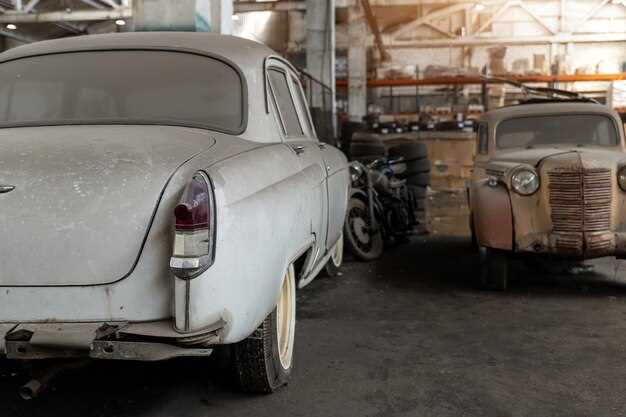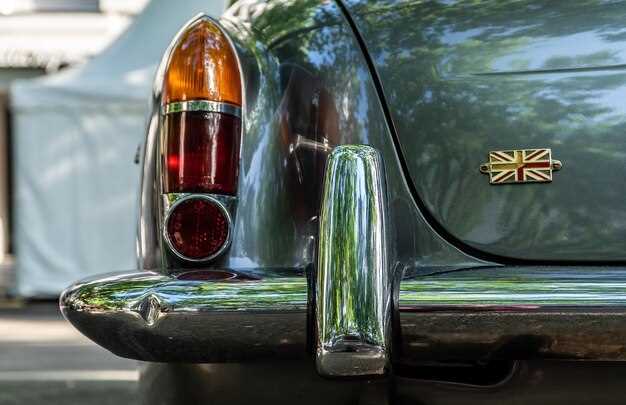
Shipping a classic car internationally requires meticulous planning and attention to detail. As these vehicles often hold significant monetary and sentimental value, ensuring their safety during transit is paramount. This article outlines essential strategies and best practices to facilitate a smooth shipping process for your classic car.
One of the first steps in international classic car shipping is selecting a reputable shipping company that specializes in automotive transport. Look for firms with a track record of success in handling classic and vintage cars. It’s critical to confirm that they have proper insurance coverage and experience in dealing with customs regulations to avoid potential pitfalls.
Additionally, understanding the various shipping methods available, such as container shipping or open transport, can make a substantial difference in protecting your classic car. Opting for a container can provide added security against weather and environmental conditions, while open transport may offer a cost-effective solution. Assessing the pros and cons of each method based on your car’s specific needs is essential.
Finally, preparing your classic car for shipping involves taking steps such as documenting its condition, removing personal items, and ensuring the vehicle is in good working order. By following these best practices, you can ensure that your prized possession arrives at its destination safely and securely, ready for its next adventure.
Choosing the Right Shipping Method for Your Classic Car

Selecting the appropriate shipping method for your classic car is crucial to ensure its safe and secure transport. There are several options available, each with its benefits and drawbacks. Understanding these options will help you make an informed decision.
One of the most commonly used methods is open trailer shipping. This approach involves transporting the vehicle on a flatbed or open trailer. While it is often more economical and widely available, classic cars can be exposed to the elements, which may not be ideal for vintage vehicles that require special care.
Alternatively, enclosed trailer shipping provides enhanced protection for classic cars. Enclosed transport shields the vehicle from weather conditions and road debris, minimizing the risk of damage. Although this option tends to be more expensive, it is often worth the investment for those who own high-value or rare models.
Another option is shipping by container. This involves placing the classic car in a shipping container, providing the highest level of security during transport, especially for international shipments. Container shipping also protects the vehicle from both environmental elements and potential theft. However, this method can be more costly and may involve longer transit times.
Additionally, consider the transportation logistics involved, including the proximity of the shipping company to both the pickup and delivery locations. Seek out reputable shipping companies with experience in handling classic cars, as they will have the necessary equipment and expertise to manage your vehicle safely.
In conclusion, when choosing the right shipping method for your classic car, weigh the options of open vs. enclosed trailer shipping and container transport based on your priorities for protection, budget, and logistics. Investing time in selecting the best method will ensure that your classic car arrives at its destination in pristine condition.
Preparing Your Classic Car for International Transport

Preparing your classic car for international shipping requires careful planning and attention to detail. To ensure a smooth transport process, start by thoroughly cleaning your vehicle. This not only allows you to inspect for any existing damage but also helps customs officials during inspection.
Next, gather important documentation, including the car’s title, registration, and proof of ownership. It is essential to verify the regulations and documentation requirements of both the shipping country and the destination country to avoid potential delays.
Consider taking high-quality photographs of your classic car from multiple angles. This visual record will help document its condition before shipping and can be beneficial for insurance purposes.
Inspect your vehicle for any leaks or mechanical issues that might worsen during transport. Fix these problems beforehand to avoid complications during transit. Remove any personal items, accessories, and loose parts that could potentially shift and cause damage while the car is being shipped.
Another important step is to ensure that your gas tank is no more than a quarter full. Excess fuel can pose safety risks during shipping and may violate regulations. Additionally, check the battery and tire pressure, ensuring that everything is in optimal condition.
Finally, you should choose a reputable shipping company that specializes in international classic car shipping. They can provide guidance on the best practices for preparing your car and offer tailored solutions for safe transport.
Understanding Customs Requirements for Classic Car Import
Importing a classic car involves navigating a complex web of customs regulations that vary by country. Ensuring compliance with these requirements is crucial to avoid delays, additional costs, or penalties. Every country has its own set of rules concerning the importation of vehicles, and classic cars often fall into specific categories due to their age and historical significance.
Before shipping your classic car internationally, it is essential to thoroughly research the customs regulations of the destination country. Common requirements may include documentation proving the vehicle’s age, authenticity, and ownership. This could entail providing original titles, bills of sale, or manufacturer certifications that validate the car’s classic status.
Additionally, customs authorities often require an emissions compliance certificate, especially in regions with strict environmental regulations. Some countries may have stringent standards regarding the types of vehicles that can be imported, which can affect the shipping process significantly. It’s advisable to consult with customs brokers or agencies that specialize in classic car shipping to ensure that all necessary documents are in order.
Import duties and taxes are also critical considerations. These fees can vary dramatically from one country to another and may be based on the car’s value, engine size, or historical importance. Understanding how these duties apply to your classic car will help you budget for your shipping expenses effectively.
In summary, grasping the customs requirements for classic car import is essential for a smooth shipping experience. Diligently preparing the necessary documentation and understanding potential fees will facilitate the process and protect your investment in the classic vehicle.

